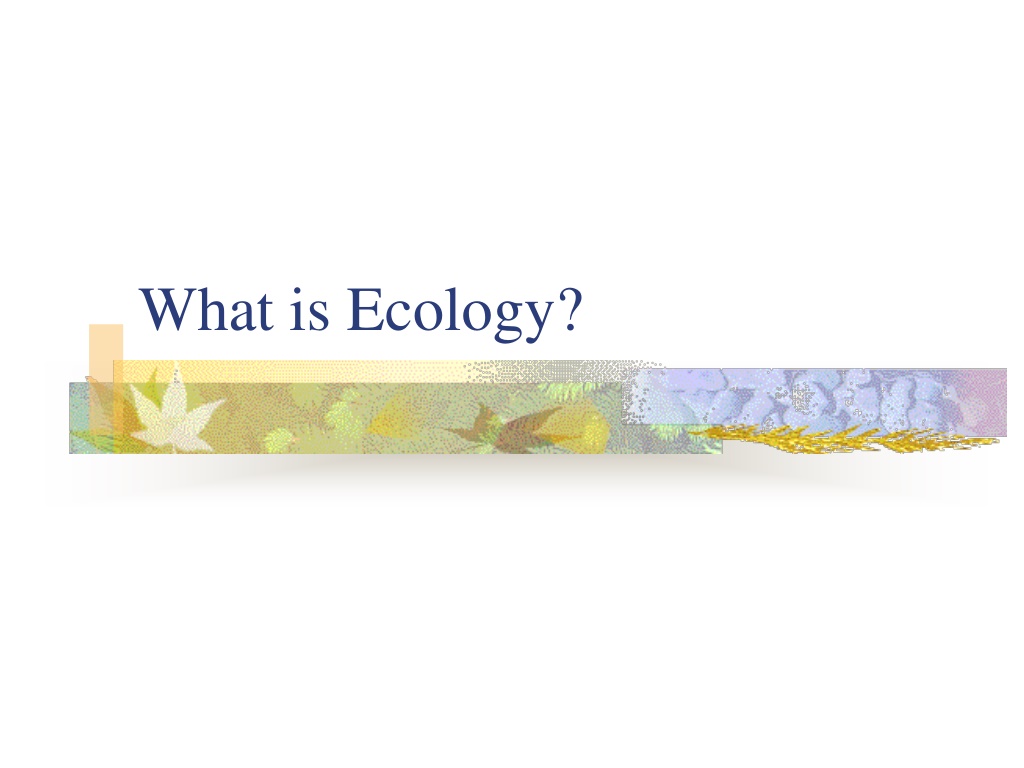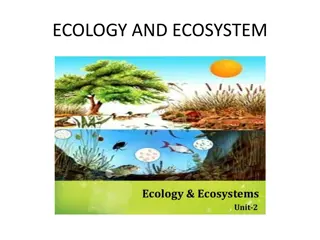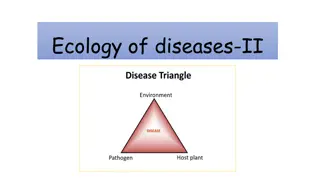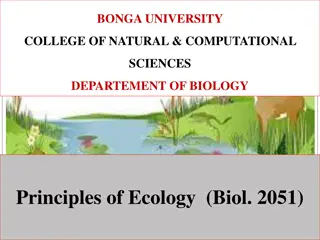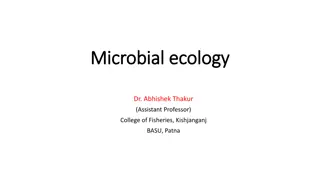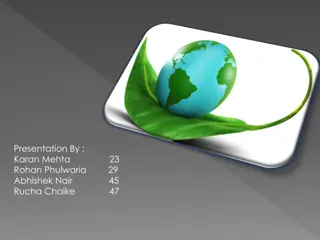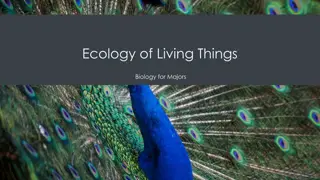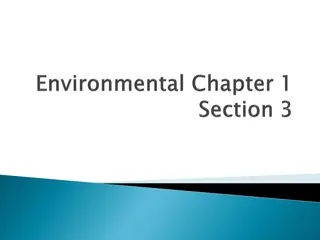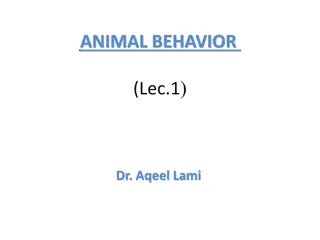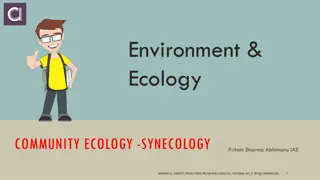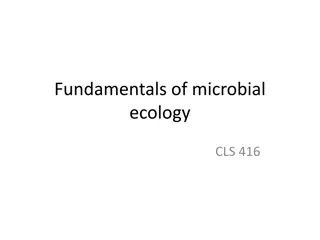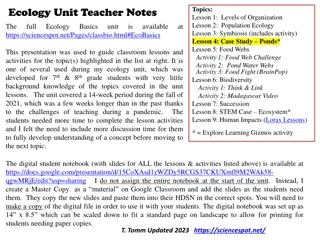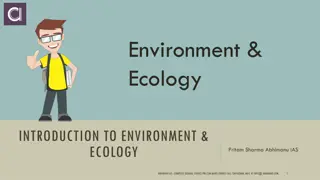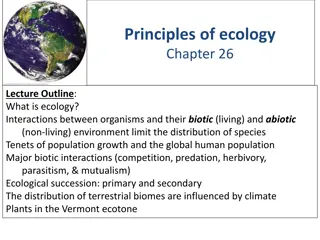Understanding Ecology: Interactions in the Environment
Ecology, originating from the Greek words "Oikos" and "Logos," is the study of interactions between living and non-living components in the environment. It encompasses the relationships between plants, animals, microorganisms, and abiotic factors like light, water, nutrients, and atmosphere. Studying ecology involves exploring various disciplines like climatology, biology, and mathematics to understand how organisms interact within ecosystems at different levels of organization.
Download Presentation

Please find below an Image/Link to download the presentation.
The content on the website is provided AS IS for your information and personal use only. It may not be sold, licensed, or shared on other websites without obtaining consent from the author. Download presentation by click this link. If you encounter any issues during the download, it is possible that the publisher has removed the file from their server.
E N D
Presentation Transcript
Origin of the wordecology Greek origin OIKOS = household LOGOS = study of Study of the house/environment in which we live.
Ecology is study of interactions between non-living components in the environment light water wind nutrients in soil heat solar radiation atmosphere, etc. AND
Living organisms Plants Animals microorganisms in soil, etc.
To study Ecology involves For non-living (abiotic) Climatology Hydrology Oceanography Physics Chemistry Geology soil analysis, etc. For living (biotic) animal behavior Taxonomy Physiology mathematics (population studies) etc.
Ecology views each locale as an integrated whole of interdependent parts that function as a unit. caribou tundra
Nonliving dead organic matter nutrients in the soil and water. Producers green plants Tundra
Consumers herbivores and carnivores Decomposers fungi and bacteria Tundra Caribou
ECOLOGY: Levels of Organization - a hierarchy of organization in the environment
Levels of organization - Terms Biosphere Surface of the earth Composed of many ecosystems Ecosystem Large or small as we decide Backyard, O Melveney Park, Hedge along Room 110, etc.
Levels of organization - Terms Population one species live in one place at one time Community All populations (diff. species) that live in a particular area.
Levels of organization - Terms Habitat physical location of community Organism simplest level of organization
Very complex Can contain 100 s to 1000 s of interacting species.
THEN Ecology is an integrated and dynamic study of the environment.
This powerpoint was kindly donated to www.worldofteaching.com http://www.worldofteaching.com is home to over a thousand powerpoints submitted by teachers. This is a completely free site and requires no registration. Please visit and I hope it will help in your teaching.
